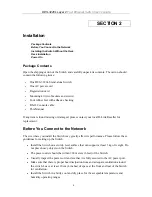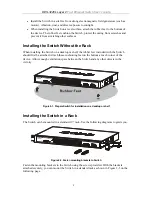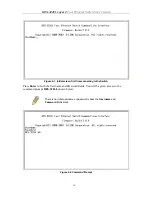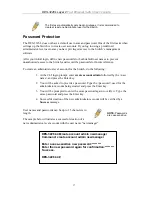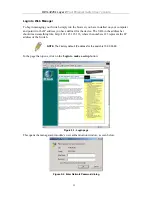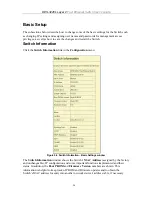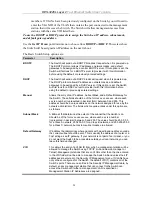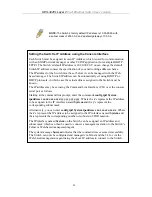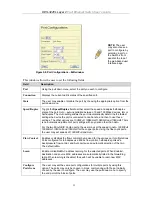
DES-3226L Layer 2
Fast Ethernet Switch User’s Guide
NOTICE:
CLI configuration commands only modify the running
configuration file and are not saved when the Switch is rebooted. To save
all your configuration changes in nonvolatile storage, you must use the
save
command to copy the running configuration file to the startup
configuration.
SNMP Settings
Simple Network Management Protocol (SNMP) is an OSI Layer 7 (Application Layer)
designed specifically for managing and monitoring network devices. SNMP enables network
management stations to read and modify the settings of gateways, routers, switches, and other
network devices. Use SNMP to configure system features for proper operation, monitor
performance and detect potential problems in the Switch, switch group or network.
Managed devices that support SNMP include software (referred to as an agent), which runs
locally on the device. A defined set of variables (managed objects) is maintained by the
SNMP agent and used to manage the device. These objects are defined in a Management
Information Base (MIB), which provides a standard presentation of the information controlled
by the on-board SNMP agent. SNMP defines both the format of the MIB specifications and
the protocol used to access this information over the network.
The DES-3326L supports SNMP versions 1, 2c, and 3. You can specify which version of
SNMP you want to use to monitor and control the Switch. The three versions of SNMP vary
in the level of security provided between the management station and the network device.
In SNMP v.1 and v.2, user authentication is accomplished using ‘community strings’, which
function like passwords. The remote user SNMP application and the Switch SNMP must use
the same community string. SNMP packets from any station that has not been authenticated
are ignored (dropped).
The default community strings for the Switch used for SNMP v.1 and v.2 management access
are:
public
- Allows authorized management stations to retrieve MIB objects.
private
- Allows authorized management stations to retrieve and modify MIB objects.
SNMP v.3 uses a more sophisticated authentication process that is separated into two parts.
The first part is to maintain a list of users and their attributes that are allowed to act as SNMP
managers. The second part describes what each user on that list can do as an SNMP manager.
The Switch allows groups of users to be listed and configured with a shared set of privileges.
The SNMP version may also be set for a listed group of SNMP managers. Thus, you may
create a group of SNMP managers that are allowed to view read-only information or receive
traps using SNMP v.1 while assigning a higher level of security to another group, granting
read/write privileges using SNMP v.3.
Using SNMP v.3 individual users or groups of SNMP managers can be allowed to perform or
be restricted from performing specific SNMP management functions. The functions allowed
or restricted are defined using the Object Identifier (OID) associated with a specific MIB. An
additional layer of security is available for SNMP v.3 in that SNMP messages may be
18





